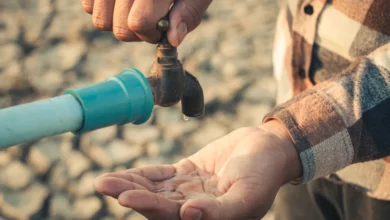Ontario launching new plan to track job-related illnesses
ens of thousands of Ontario workers were compensated last year after getting sick from exposure to toxins on the job, yet a new report commissioned by Premier Doug Ford’s government says many cases of workplace-related illness are being missed.
The report, to be released on Tuesday, is an independent review of Ontario’s system for preventing and responding to occupational diseases, such as cancers, lung conditions or neurological disorders that are linked to the working environment.
The report says workers can struggle to get a prompt diagnosis or compensation, all because symptoms may not appear until a long time after exposure to a toxin.
“The crucial link between exposures at work and symptoms of disease is often missed by employers, health-care providers and workers themselves,” says a draft of the report, which the government provided to CBC News in advance of its release.
In 2022, Ontario’s Workplace Safety and Insurance Board (WSIB) approved more than 40,000 claims for occupational disease, defined as a “condition that results from exposure to a physical, chemical or biological agent in the workplace.”
The government ordered the review last year and commissioned the MAP Centre for Urban Health Solutions at St Michael’s Hospital to produce the report.

“The Ontario health and safety system and the healthcare system are not well connected. Workers must navigate between the work and healthcare landscapes on their own,” says the report.
Among the report’s key recommendations:
- Launch a public awareness campaign on occupation disease, focused on the link between work and health.
- Create an occupational disease surveillance system.
- Improve the system for workplace medical screening.
In response to the report, Ontario’s labour minister will on Tuesday announce plans for a new system for tracking diseases and long-term illnesses contracted on the job.
Provincial officials told CBC News that the government will commit to creating Canada’s first occupational exposure registry, move that Labour Minister David Piccini says will speed up diagnosis of workplace-related diseases and improve worker compensation.
“We know that there are people who still fall ill because of their job, and they should have the confidence to know that they and their loved ones will be taken care of, and this isn’t happening enough,” Piccini said in an interview.
Ford appointed Piccini as minister of labour last month to replace Monte McNaughton, who resigned his seat for a private sector post.
Such was the case with the thousands of northern Ontario miners who were forced to inhale the aluminum oxide dust called McIntyre Powder, a substance that their employers told them would protect them from the lung disease silicosis.
Instead, many of these miners developed other lung ailments or neurological disorders such as Parkinson’s disease.
It was only in recent years, some four decades after the use of McIntyre Powder ceased, that Ontario’s WSIB began automatically compensating all miners who developed Parkinson’s after exposure. The province issued a formal apology in 2022.
Janice Martell, founder of the McIntyre Powder Project, said she welcomes the government’s commitment to create a provincial registry of occupational exposures to a wider range of toxins.

“We’re not going to break the cycle of occupational disease unless we look at what workers are exposed to and what their health issues are,” Martell said in an interview.
Martell’s father, Jim Hobbs, inhaled McIntyre Powder while working as a miner and died in 2017 of Parkinson’s. She spearheaded the effort to gather the names and health status of former miners who had been exposed, crucial evidence toward establishing its link with disease.
“Workers have been exposed to stuff for years, stuff that we know is toxic,” Martell said.
“When we go and see a doctor, the doctor will ask about your family medical history, they’ll ask you about lifestyle factors: ‘Do you drink? Do you smoke?’ How often have we been asked at our doctor’s: ‘What do you do for a living? What are you exposed to in your workplace?'”
Other steps the government will announce on Tuesday include improved monitoring of silica exposure in the construction and mining industries and the creation of an occupational illness leadership table of industry experts and worker advocates to guide action on the report’s recommendations.








Redes Sociais - Comentários